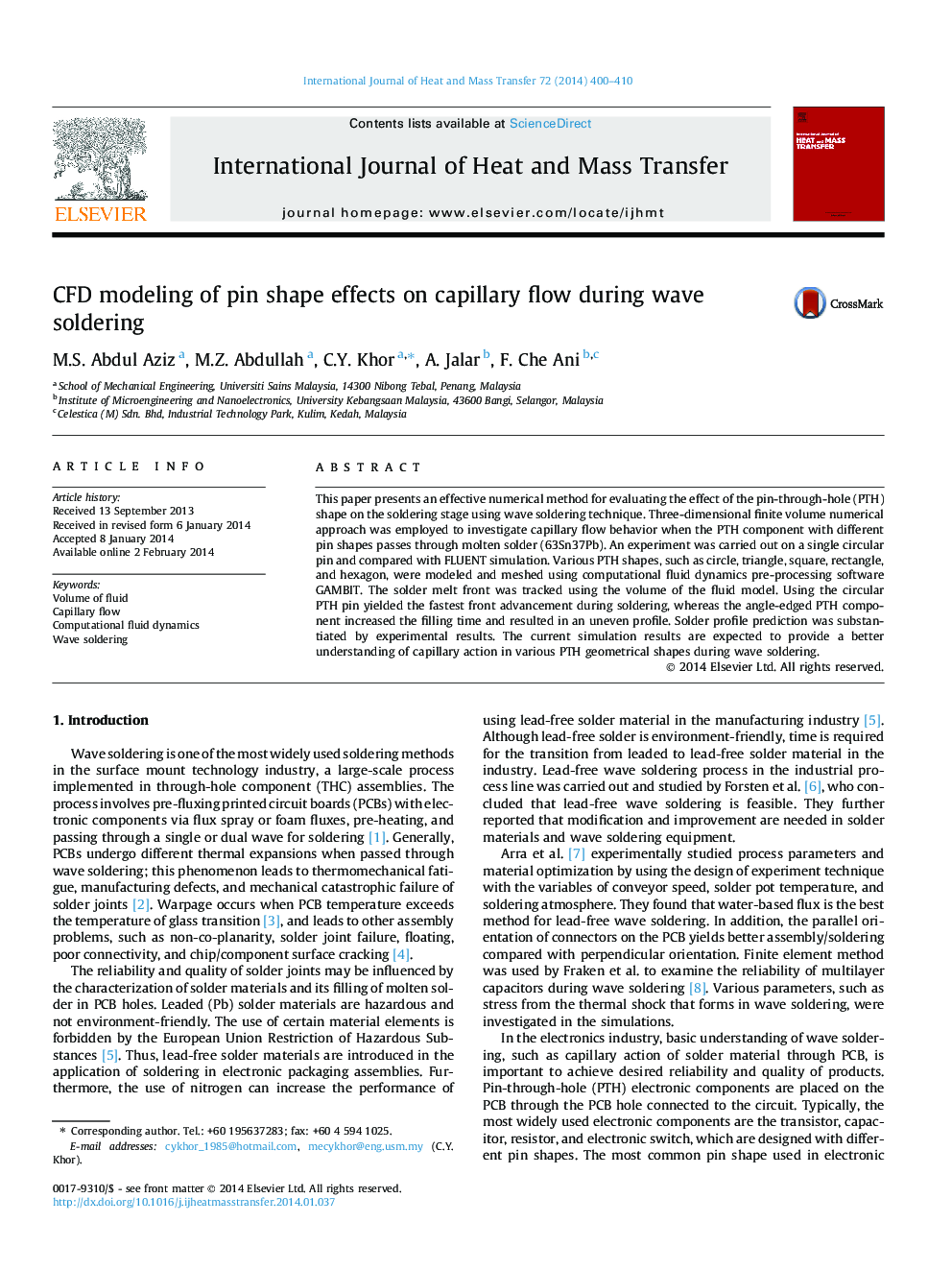| Article ID | Journal | Published Year | Pages | File Type |
|---|---|---|---|---|
| 7057294 | International Journal of Heat and Mass Transfer | 2014 | 11 Pages |
Abstract
This paper presents an effective numerical method for evaluating the effect of the pin-through-hole (PTH) shape on the soldering stage using wave soldering technique. Three-dimensional finite volume numerical approach was employed to investigate capillary flow behavior when the PTH component with different pin shapes passes through molten solder (63Sn37Pb). An experiment was carried out on a single circular pin and compared with FLUENT simulation. Various PTH shapes, such as circle, triangle, square, rectangle, and hexagon, were modeled and meshed using computational fluid dynamics pre-processing software GAMBIT. The solder melt front was tracked using the volume of the fluid model. Using the circular PTH pin yielded the fastest front advancement during soldering, whereas the angle-edged PTH component increased the filling time and resulted in an uneven profile. Solder profile prediction was substantiated by experimental results. The current simulation results are expected to provide a better understanding of capillary action in various PTH geometrical shapes during wave soldering.
Related Topics
Physical Sciences and Engineering
Chemical Engineering
Fluid Flow and Transfer Processes
Authors
M.S. Abdul Aziz, M.Z. Abdullah, C.Y. Khor, A. Jalar, F. Che Ani,
